CAMPAIGN:NO PARK WITH ELECTRIC ENGINE RUNNING

Models: 1993 Chevrolet and GMC 'T' Trucks
TO: ALL GENERAL MOTORS DEALERS
THIS BULLETIN CANCELS AND REPLACES BULLETIN 4Dl3 ISSUED NOVEMBER 1994. ALL COPIES OF 4Dl3 SHOULD BE DESTROYED.
Several different length attaching bolts are used on the 4L60E valve body. It is extremely critical that the correct length bolt is installed in each location. If this procedure is not strictly followed, a binding or "tie-up" condition can occur when engaging forward or reverse.
In the "Inspection Procedure", Item 2, information regarding Figure 2 has been added to describe the proper reading of the identification plate.
The GMC VIN breakpoints have been corrected.
ALWAYS confirm vehicle eligibility through DCS prior to beginning campaign repairs.
General Motors of Canada Limited has determined that a defect which relates to motor vehicle safety exists in certain 1993 Chevrolet and GMC 4-wheel drive 'T' trucks equipped with 4L60-E automatic transmissions. These vehicles may develop significant wear on the low and reverse clutch, which may prevent the park pawl from engaging. This could allow a "no park" condition to occur while the engine is running. Unintentional movement of the vehicle could result in injury to persons in the path of the vehicle. If the ignition is turned off, however, the "no park" condition will not occur.
To prevent the possibility of this condition occurring, dealers are to:
1. Check the transmission fluid for contamination which will indicate if the low and reverse has had excessive wear. If the transmission shows excessive wear, the transmission will be replaced.
2. Remove the right side brace from transmission to transfer case.
3. Modify the transmission case hydraulic oil circuit to prevent the low and reverse piston from being applied in the park (P) range with the engine running if the transmission was produced prior to January 4, 1993.
VEHICLES INVOLVED:
Involved are certain 1993 Chevrolet and GMC 4-wheel drive 'T' trucks equipped with 4L60-E automatic transmissions and built within the following VIN breakpoints:
Chevrolet
Year Model Plant Plant Code From Through 1993 'T' Truck Moraine "2" P2100001 P2147416 1993 'T' Truck Shreveport "8" P8100003 P8168483 1993 'T' Truck Pontiac "0" P0100002 P0136220
GMC
Year Model Plant Plant Code From Through 1993 'T' Truck Moraine "2" P2500001 P2518817 1993 'T' Truck Shreveport "8" P8500001 P8516845 1993 'T' Truck Pontiac "0" P0500001 P0511790
NOTE: PLEASE CHECK DCS SCREEN 45 OR YOUR V.I.N. LISTING BEFORE PERFORMING CAMPAIGN TO ENSURE THAT THE VEHICLE IS AFFECTED. ONLY AFFECTED VIN'S WILL BE PAID.
All affected vehicles have been identified by the VIN listing provided to involved dealers with this bulletin. Any dealer not receiving a listing was not shipped any of the affected vehicles.
DEALER CAMPAIGN RESPONSIBILITY:
All unsold new vehicles in dealer's possession and subject to this campaign must be held and inspected/repaired per the Service Procedure of this Campaign Bulletin before owners take possession of these vehicles.
Dealers are to perform this campaign on all involved vehicles at no charge to owners, regardless of kilometres traveled, age of vehicle, or ownership, from this time forward.
Owners of vehicles recently sold from your new vehicle inventory with no owner information indicated on the dealer listing, are to be contacted by the dealer, and arrangements made to make the required correction according to instructions contained in this bulletin. This could be done by mailing to such owners a copy of the owner letter accompanying this bulletin. Campaign follow-up cards should not be used for this purpose, since the owner may not as yet have received the notification letter.
In summary, whenever a vehicle subject to this campaign is taken into your new or used vehicle inventory, or is in your dealership for service in the future, please take the steps necessary to be sure the campaign correction has been made before selling or releasing the vehicle.
CAMPAIGN PROCEDURE:
Refer to Section 4 of the Service Policies and Procedures Manual for the detailed procedure handling Product Campaigns. Dealers are requested to complete the campaign on all transfers soon as possible.
OWNER NOTIFICATION:
All owners of record at the time of campaign release are shown on the attached computer listing and have been notified by first class mail from General Motors (see copy of owner letter included with this bulletin). The listings provided are for campaign activity only and should not be used any other purpose.
PARTS INFORMATION:
SPECIAL TOOL KIT
Each dealer was shipped special tool kit, J-41350 for use in this campaign during the week of October 3, 1994. This kit was furnished at no charge and arrived labeled "CAMPAIGN MATERIAL - ATTENTION SERVICE MANAGER". The campaign number used on the package was 1599 and should have been changed 4Dl3 as per DCS sent October 7, 1994.
GENERAL PART INFORMATION - USE AS REQUIRED
Part Number Description Transmission Model 24200796 Filter Kit 3TAD & 3TLD 24202338 Trans. Fix Kit 3TAD 24202339 Trans. Fix Kit 3TLD 8689977 SRTA Transmission 3TAD 8689979 SRTA Transmission 3TLD 9421037 Bolt 3TAD & 3TLD 10952623 Transmission Fluid (Approx. 4 Litres)
PROM REPLACEMENT
The only units that require a replacement PROM are those that have the transmission modification procedure completed. These have been manufactured in 1992, and are not contaminated.
NOTE: DO NOT REPLACE THE PROM ON ANY OTHER REPAIR EXCEPT TRANSMISSION MODIFICATION.
PROM PART INFORMATION - USE AS REQUERED
PROM Broadcast Engine Part Number Code Emission Type Type Body Style
16210986 BMUR Federal (NA5, NA6) L35 Pick-Up or Utility 16210997 BMUU Federal (NA5, NA6) LB4 Pick-Up or Utility 16211003 BMUX Light Duty Export (NM8) LB4 Pick-Up or Utility
PARTS AND LABOUR CLAIM INFORMATION
Credit for the campaign work performed will be paid upon receipt of a properly completed campaign claim card or DCS transmission in accordance with the following:
Repair Code Description Time Allowance
2A Inspect for Fluid Contamination, Remove Right 6 Side Brace and Replace Bolt (Figure 1, Item 3) 3A Inspect for Fluid Contamination and Remove 2.7 Right Side Brace, Modify Transmission Hydraulic Circuit and Replace PROM 6A Install SRTA Transmission 6.0
Time allowance includes 0.1 hour for dealer administrative detail associated with this campaign. Parts credit will be based on dealer net plus 30% to cover parts handling.
SERVICE PROCEDURE:
INSPECTION PROCEDURE
1. Check transmission fluid for burned fluid and/or contamination. If fluid shows any contamination or that the transmission has been subject to excessive wear, then the transmission should be replaced with a SRTA.
Important: Do not re-install transfer case brace (Figure 1, item 2,).
Note: Any marginal condition of fluid condition should result in a SRTA installation. Damage to transmission has already occurred.
FIGURE 1
la. When SRTA installation is required, follow transmission removal and installation procedure in appropriate on-vehicle service manual. Flushing transmission fluid cooler is part of SRTA installation procedure.
lb. If SRTA transmission is installed, install Campaign Identification Label when installation is complete. No further action will be required.
SERVICE PROCEDURE: (Cont'd.)
2. If fluid is not contaminated, raise vehicle on hoist and locate transmission identification as shown in Figure 2, below.
NOTICE: (REGARDING FIGURE 2)
The "3" preceding the model is the model year identifier. This campaign involves only the units with a "3" for model year 1993. Since the reference to calendar year does not appear on the identification plate, it is reasonable to determine that the vehicle was assembled within ten days of the transmission being manufactured. If a vehicle has a build date on the certification sticker of January, 1993 the transmission could have a Julian date sequence of either a high 300, indicating it was built in late 1992 or a low sequence such as 004, indicating it was built in early calendar year 1993. This information will determine if the modification procedure should be performed. The digit immediately following the model identifier is the type of transmission. This campaign involves only "D" type transmissions which are the 4L60E type.
SUMMARY: Transmissions involved in this campaign were built as models "TA" or "TL" and were built late, above day 220 and up to day 4 of 1993. If manufactured in calendar year 1992 and are not contaminated, dealers should perform the modification procedure, remove the side brace, replace the bellhousing bolt and replace the PROM. If manufactured after January 4, 1993, no modification is performed.
SERVICE PROCEDURE: (Cont'd.)
3. a. If transmission is built on or after January 4. 1993 (Julian Date 004). remove right side brace from transmission to transfer case as seen in Figure 1. Bolt (Figure 1, item 3) must be replaced. There is no need to replace bolt which originally attached brace to transfer case (Figure 1, item 1).
After removal of brace is complete, install Campaign Identification Label. No further action is required for these vehicles.
b. If transmission is built before January 4. 1993 (Julian Date 004, right side brace from transmission to transfer case must be removed as in step 3a above. In addition, valve body must be removed as described in the on-vehicle section of the applicable service manual. The Transmission Modification Procedure in this bulletin must then be performed.
TRANSMISSION MODIFICATION PROCEDURE
1. Remove transmission valve body and store in a clean, safe place away from under body of truck. Refer to appropriate 1993 on-vehicle service manual for correct details of this procedure.
Note: It is extremely critical that the correct length bolt is reinstalled in each location. Please make a note as to the location of each individual bolt.
2. Hang wire harness out of way and clean case with solvent (Figure 3).
3. Thoroughly dry case with shop air (Figure 4).
SERVICE PROCEDURE: (Cont'd.)
TRANSMISSION MODIFICATION PROCEDURE (Cont'd.)
4. Attach tool J-41350 to case with bushing and lettering facing floor (Figures 5 and 6).
5. Use bolts provided with tool to install all bolts finger tight prior to tightening to eliminate possible bolt misalignment (Figure 6).
6. Torque all bolts to 5 N.m (44 lb. in.) (Figure 7).
Notice: If valve body bolts are used with tool they will cause damage to case due to length differences. Use bolt supplied with special tool J-41350.
SERVICE PROCEDURE: (Cont'd.)
TRANSMISSION MODIFICATION PROCEDURE (Cont'd.)
7. Drill out case using drill bit provided in tool kit J-41350. Apply cutting fluid to drill The plate from tool kit J-41350 has a drill guide bushing in the centre. Drill bit should be placed in drill guide bushing when drilling out case. Depth of drill must go until shoulder stop of the drill bit meets the drill bushing to guarantee proper depth (Figure 8) and to open the oil channel.
Notice: Do not drill case with valve body or other related hardware directly below.
8 . Remove tool J-41350 from case (Figure 9).
9 . Clean case with solvent (Figure 10).
10. Thoroughly dry case with shop air (Figure 1 1). Repeat if necessary.
11. Using stone provided with tool kit J41350, stone surface of case where hole has been drilled to remove any burrs. Inspect for loose burrs in hole and channel that was drilled (Figure 12).
SERVICE PROCEDURE: (Cont'd.)
TRANSMISSION MODIFICATION PROCEDURE (Cont'd.)
12. Clean case with solvent (Figure 13).
13. Thoroughly dry case with shop air (Figure 14). Repeat stone cleaning procedure until transmission cavity is free of all burrs and metal debris.
14. Install new manual valve (supplied in transmission fix kit) in valve body (Figure 15).
15. Remove all filters from old spacer plate, clean them and put them on new spacer plate provided in transmission fix kit.
16. Install valve body using new valve body gaskets and new spacer plate provided in transmission fix kit (be sure filters have been installed on spacer plate). Old valve body gaskets and spacer plates are not to be reused.
NOTE: PLEASE REFER TO THE 1993 UNIT REPAIR MANUAL (X9337), PAGE 7A-14B-54, FIGURE 112, FOR THE PROPER VALVE BODY BOLT IDENTIFICATION AND LOCATION.
SERVICE PROCEDURE: (Cont'd.)
TRANSMISSION MODIFICATION PROCEDURE (Cont'd.)
17. Install new transmission oil filter and install transmission oil pan using new transmission oil pan gasket.
17a. Refill transmission with 4 quarts of automatic transmission fluid (Dextron IIE or Dextron III).
17b. Start unit and engage all gears. Recheck transmission fluid level and adjust level as required. Inspect for any fluid leaks and correct before returning unit to customer.
18. Install new PROM (MEM-CAL) as described in On-Vehicle section of service manual The only units that require a replacement PROM are those that have the transmission modification procedure completed. These have been manufactured in 1992, and are not contaminated.
NOTICE: Do not replace the PROM on any other repair except transmission modification.
19. Install Campaign Identification Label.
INSTALLATION OF CAMPAIGN IDENTIFICATION LABEL
Clean surface of radiator upper mounting panel and apply a Campaign Identification Label. Make sure the correct campaign number is inserted on the label. This will indicate that the campaign has been completed.
General Motors of Canada bulletins are intended for use by professional technicians, NOT a "do-it-yourselfer." They are written to inform these technicians of conditions that may occur on some vehicles, or to provide information that could assist in the proper service of a vehicle. Properly trained technicians have the equipment, tools, safety instructions, and know-how to do a job properly and safely. If a condition is described, DO NOT assume that the bulletin applies to your vehicle, or that your vehicle will have that condition. See your General Motors dealer for information on whether your vehicle may benefit from the information.
Customer Support Department General Motors of Canada Limited
The following questions may help further clarify situations regarding this campaign.
Q. Are SRTA units already installed in the vehicle subject to this campaign?
A. Any SRTA unit installed in an involved vehicle (validate on DCS) should be processed in the same manner as a production transmission. Qualify the transmission for contamination, Julian date, model code and transmission type. If built before or after January 4, 1993 will be the determining factor if the modification procedure is to be performed or not.
Q. The model of the transmission is not 3TAD or 3TLD, what action is required?
A. It is very unlikely that any other model of transmission has been installed at the time of production. However, it is possible to have an erroneous model stamping or that an incorrect transmission was installed during service.
To determine the actual transmission required, verify the engine which the unit was built with, either L35 or LB4. This can be easily accomplished by reading the standard production identification description (SPID) label of the vehicle. If the engine is a L35, install SRTA 868997 model "TAD". If the engine is a LB4, install SRTA 8689979 model "TLD".
Q. We performed the transmission modification and now the transmission is inoperative, why?
A. During the modification procedure it is essential to remove all burrs and metal fragments as described in the bulletin. If the transmission is not cleaned properly it could result in plugged oil passages and an inoperative condition.
Q. The special drill bit in tool package J41350 is not available, what type of bit should be used?
A. Only the special drill bit provided in J41350 is to be used to perform the modification procedure! This bit has been specially designed and built with a stop-guide to provide the exact length required to accomplish the drilling operation without damage to any internal transmission parts. Alternatives of any sort are unacceptable for completing this portion of the campaign service procedure.
Q. Can the special guide tool be installed improperly to cause unintentional damage?
A. No. The guide plate will only bolt onto the valve body area of the transmission in the "D" cavity and allow the drill bit to modify the correct hydraulic circuit. However, using the wrong bolts to attach the guide can lead to transmission case damage. Use only the bolts supplied in the J41350 package. Refer to campaign bulletin page 7, items 4, 5 and 6.
Q. Why is a PROM part of a transmission campaign?
A. The PROM provides a control to the various transmission electronic solenoids. In this instance the new PROM delivers an output signal that results in increased line pressure to prevent an undesirable delay when engaging the unit into gear at low ambient temperatures.
Q. If we install a SRTA unit as part of this campaign service procedure, should we install a new PROM?
A. No. PROM replacement is necessary only if transmission modification procedures are performed.
Q. If we already installed a new PROM in a vehicle that did not have the transmission modified, what should we do?
A. Do nothing. The newer prom will not cause any adverse conditions with either the operation or durability of the transmission.
November 1994
Dear General Motors Customer:
General Motors of Canada Limited has determined that a defect which relates to motor vehicle safety exists in certain 1993 Chevrolet and GMC 4-wheel Model trucks equipped with 4L60-E automatic transmissions. These vehicles may develop significant wear on the low and reverse clutch, which may prevent the park pawl from engaging. This could allow a "no park" condition to occur while the engine is running. Unintentional movement of the vehicle could result in injury to persons in the path of the vehicle. If the ignition is turns off, however, the "no park" condition will not occur.
To prevent the possibility of this condition occurring, your dealer will:
1. Check the transmission fluid for contamination which will indicate if the low and reverse has had excessive wear. If the transmission shows excessive wear, the transmission will be replaced.
2. Remove the right side brace from transmission to transfer case.
3. Modify the transmission case hydraulic oil circuit to prevent the low and reverse piston from being applied in the park (P) range with the engine running if the transmission was produced prior to January 4, 1993.
This service will be provided to you at no charge.
Please contact your GM dealer as soon as possible to arrange a service date.
If parts are required, ask your dealer for details regarding their availability. If parts are not in stock, they can be ordered before scheduling your service date.
This letter identifies your vehicle. Presentation of this to your dealer will assist their Service personnel in completing the necessary correction to your vehicle in the shortest possible time.
We are sorry to cause you this inconvenience; however, we have taken this action in the interest of you continued satisfaction with our products.
Customer Support Department General Motors of Canada Limited
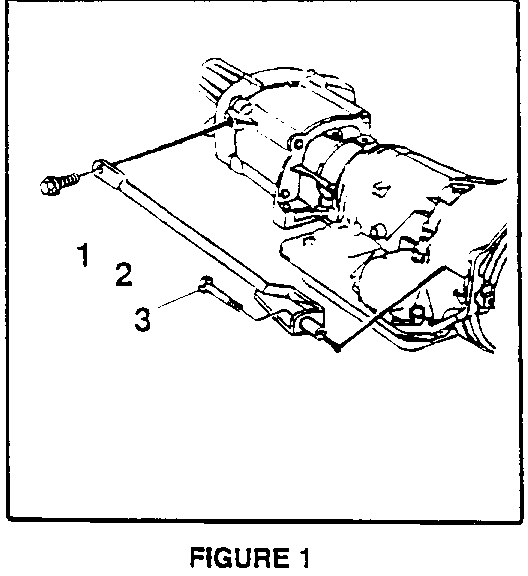
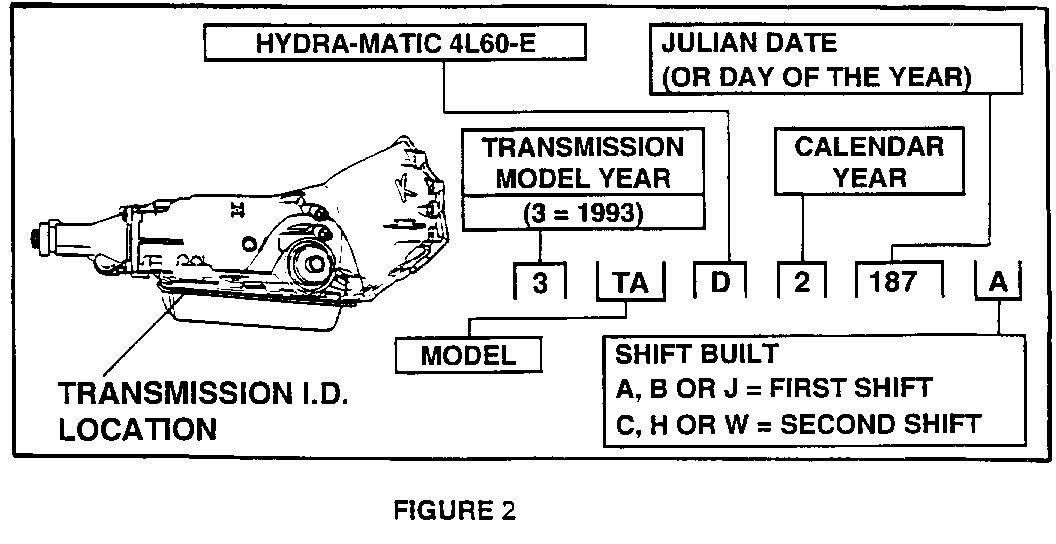
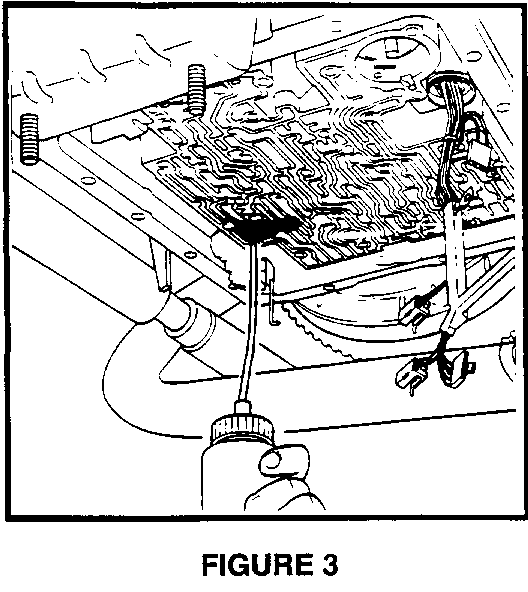
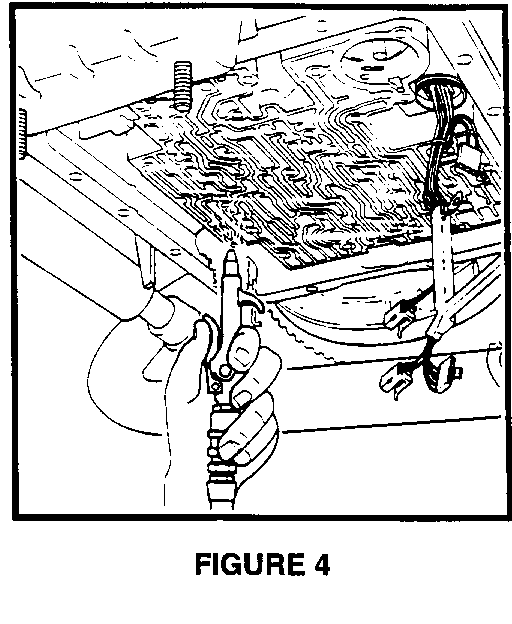
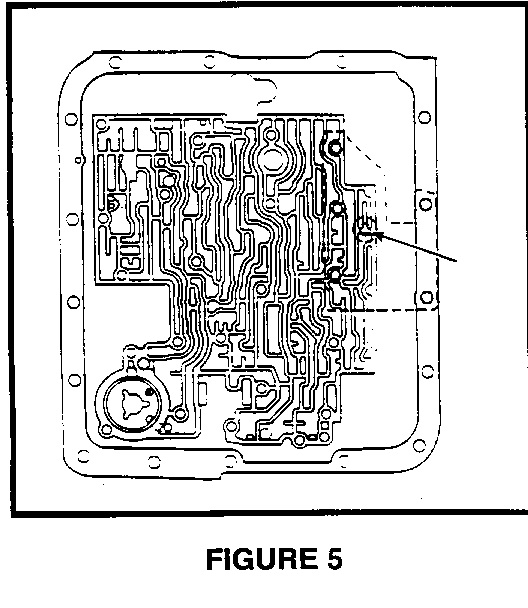

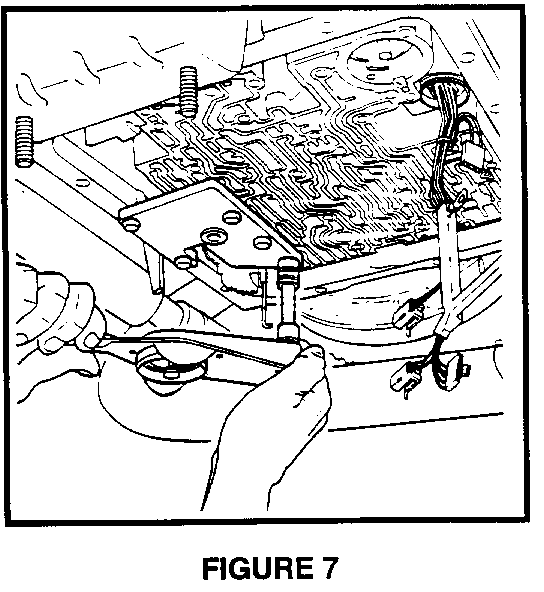
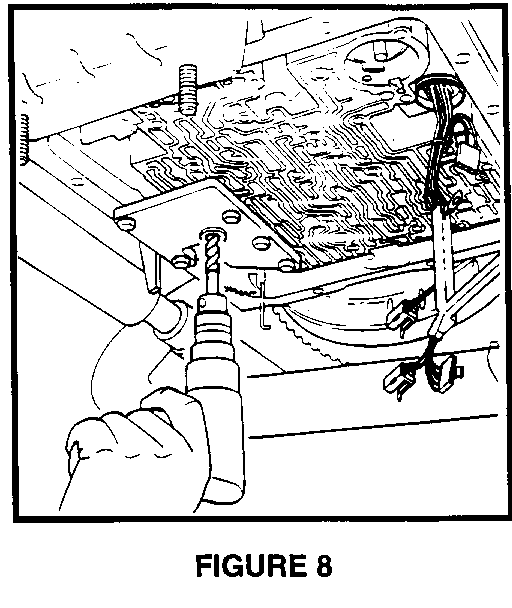
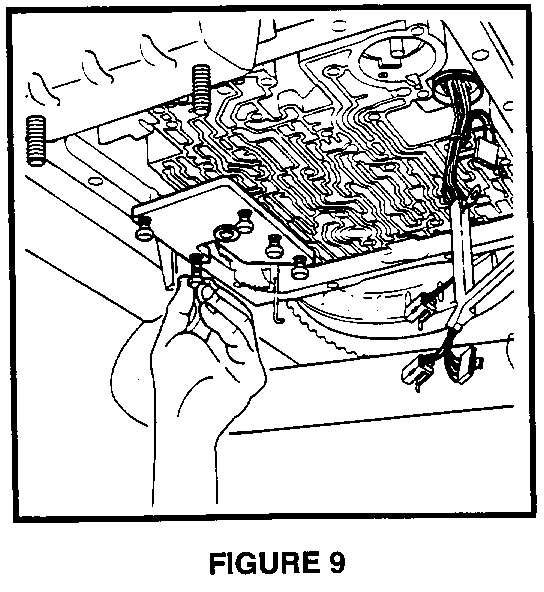

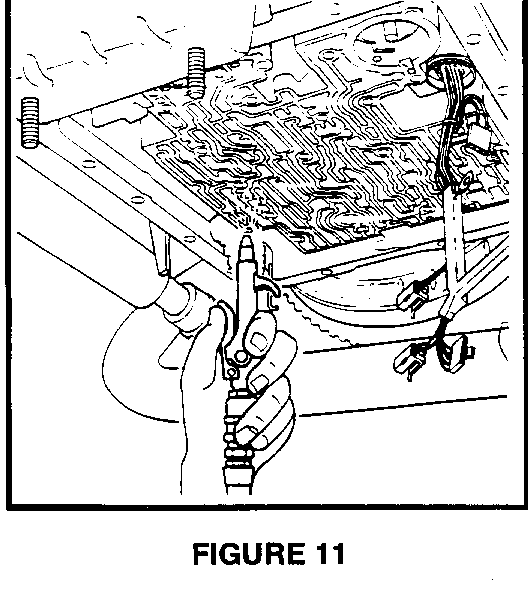
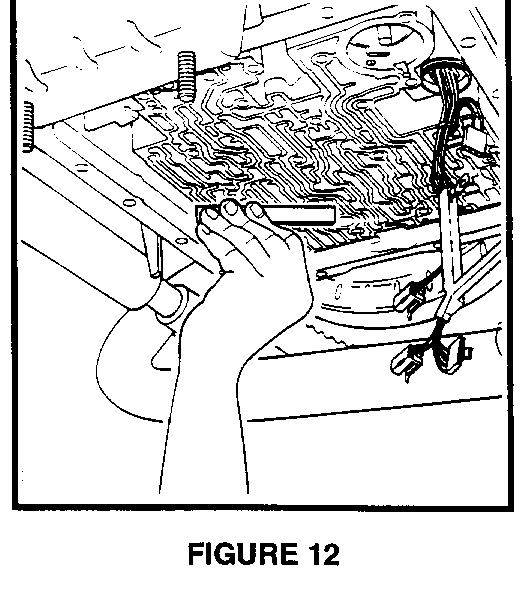
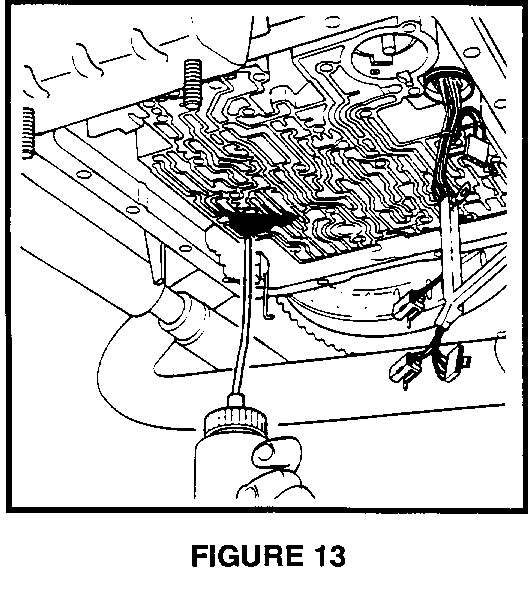
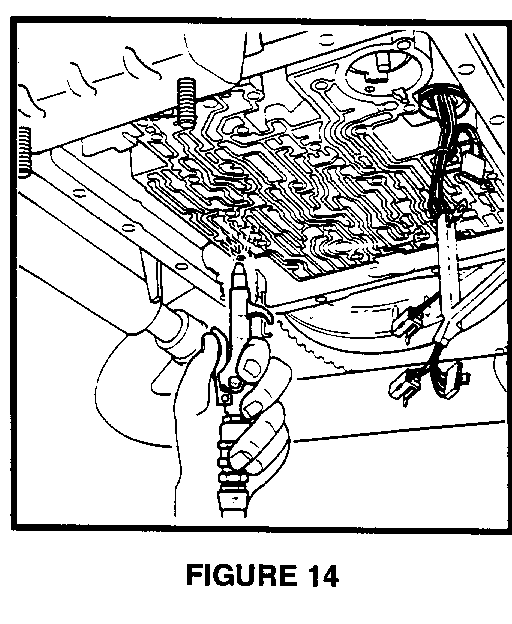
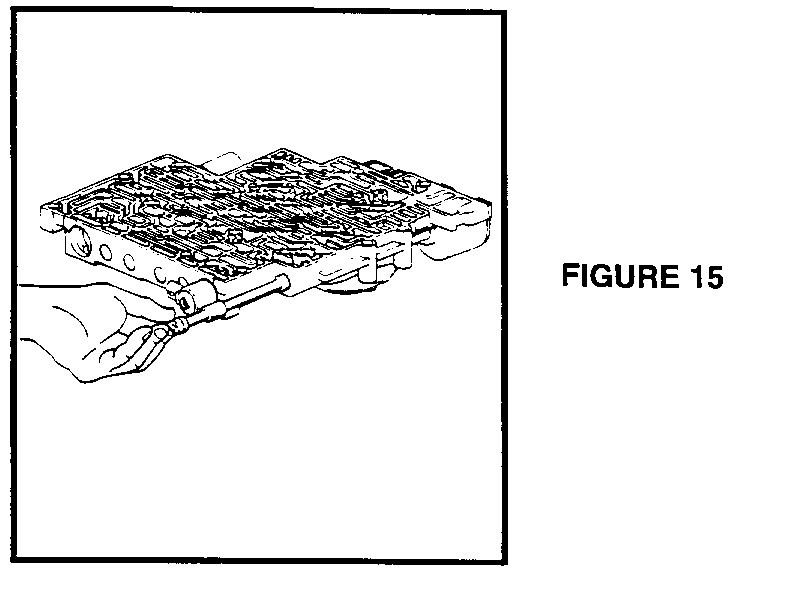
General Motors bulletins are intended for use by professional technicians, not a "do-it-yourselfer". They are written to inform those technicians of conditions that may occur on some vehicles, or to provide information that could assist in the proper service of a vehicle. Properly trained technicians have the equipment, tools, safety instructions and know-how to do a job properly and safely. If a condition is described, do not assume that the bulletin applies to your vehicle, or that your vehicle will have that condition. See a General Motors dealer servicing your brand of General Motors vehicle for information on whether your vehicle may benefit from the information.
